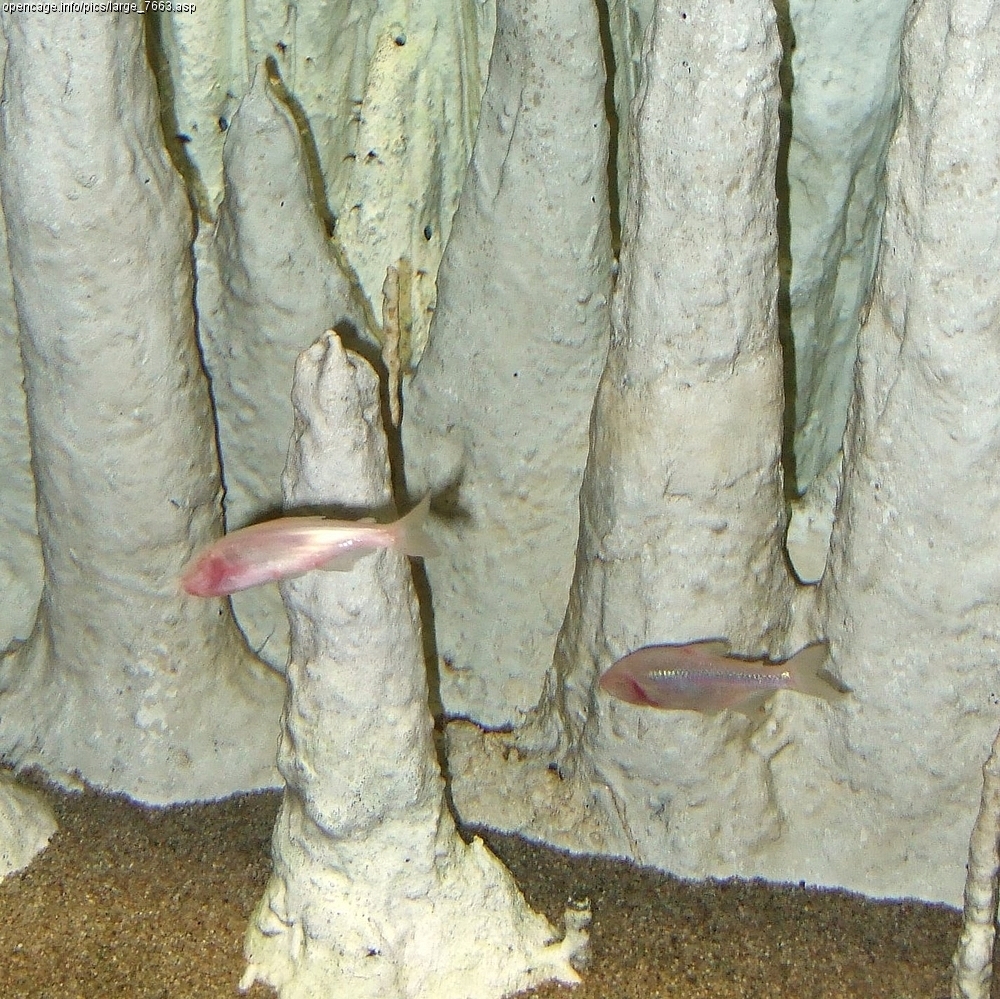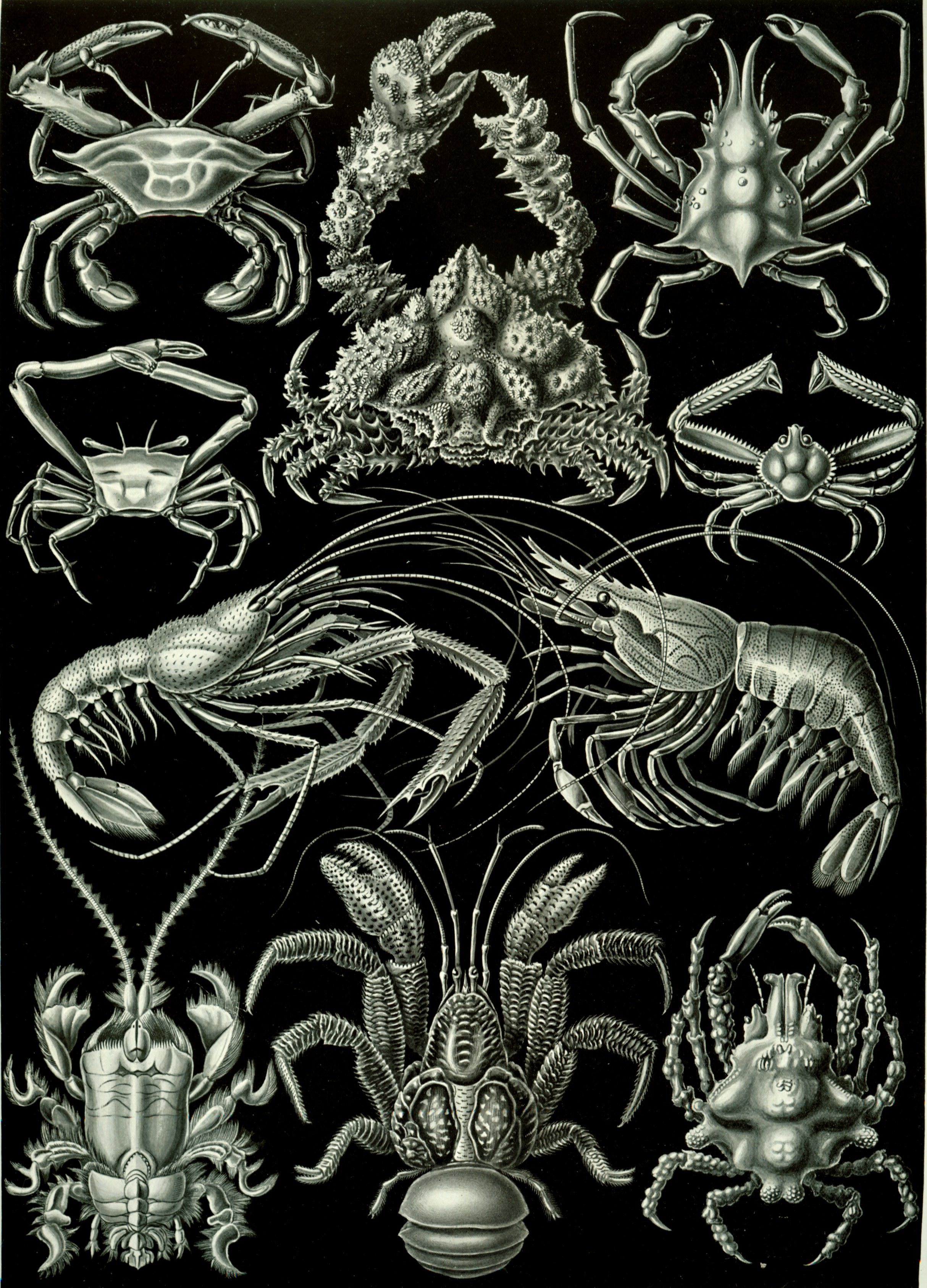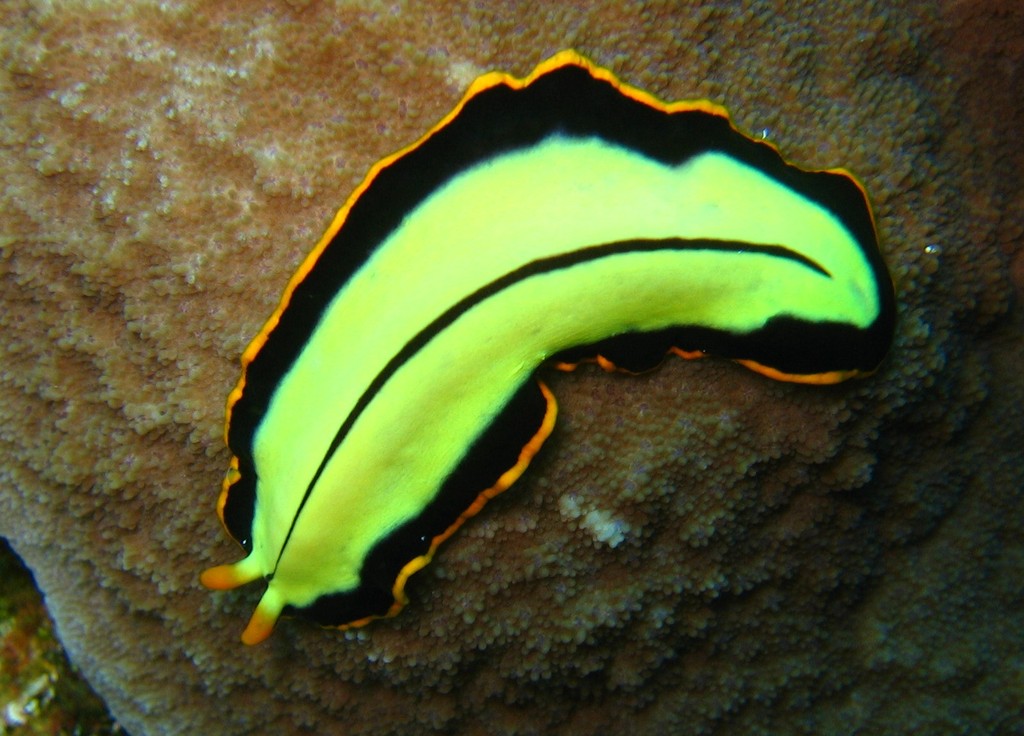|
Stygofauna
Stygofauna are any fauna that live in groundwater systems or aquifers, such as caves, fissures and vugs. Stygofauna and troglofauna are the two types of subterranean fauna (based on life-history). Both are associated with subterranean environments – stygofauna are associated with water, and troglofauna with caves and spaces above the water table. Stygofauna can live within freshwater aquifers and within the pore spaces of limestone, calcrete or laterite, whilst larger animals can be found in cave waters and wells. Stygofaunal animals, like troglofauna, are divided into three groups based on their life history - stygophiles, stygoxenes, and stygobites. # Stygophiles inhabit both surface and subterranean aquatic environments, but are not necessarily restricted to either. # Stygoxenes are like stygophiles, except they are defined as accidental or occasional presence in subterranean waters. Stygophiles and stygoxenes may live for part of their lives in caves, but don't complete t ... [...More Info...] [...Related Items...] OR: [Wikipedia] [Google] [Baidu] |
Fauna
Fauna (: faunae or faunas) is all of the animal life present in a particular region or time. The corresponding terms for plants and fungi are ''flora'' and '' funga'', respectively. Flora, fauna, funga and other forms of life are collectively referred to as '' biota''. Zoologists and paleontologists use ''fauna'' to refer to a typical collection of animals found in a specific time or place, e.g. the " Sonoran Desert fauna" or the " Burgess Shale fauna". Paleontologists sometimes refer to a sequence of faunal stages, which is a series of rocks all containing similar fossils. The study of animals of a particular region is called faunistics. Etymology ''Fauna'' comes from the name Fauna, a Roman goddess of earth and fertility, the Roman god Faunus, and the related forest spirits called Fauns. All three words are cognates of the name of the Greek god Pan, and ''panis'' is the Modern Greek equivalent of fauna (πανίς or rather πανίδα). ''Fauna'' is also the word fo ... [...More Info...] [...Related Items...] OR: [Wikipedia] [Google] [Baidu] |
Astyanax Jordani
''Astyanax jordani'' is a freshwater fish of the characin family (family Characidae) of order Characiformes, native to Mexico. It is sometimes called the cave tetra, or by its local Spanish name ''sardina ciega''. A blind cave fish, ''A. jordani'' is very closely related to the Mexican tetra (''A. mexicanus'') and their taxonomy is disputed. Some treat the two as variants of a single species (in which case ''A. jordani'' is a junior synonym of ''A. mexicanus'') and this is supported by phylogenetic evidence, but others continue to recognize the two as separate species. ''A. jordani'' is listed on the IUCN Red List as Endangered on the basis of a dwindling population and an acutely-restricted, highly variable habitat. It is fairly resilient, however, having a population doubling time of 15 months. The fish was named in honor of C. Basil Jordan of the Texas Aquaria Fish Company (Dallas, Texas), who donated the first type specimens and documented and observed the first wild bl ... [...More Info...] [...Related Items...] OR: [Wikipedia] [Google] [Baidu] |
Decapods
The Decapoda or decapods, from Ancient Greek δεκάς (''dekás''), meaning "ten", and πούς (''poús''), meaning "foot", is a large order (biology), order of crustaceans within the class Malacostraca, and includes crabs, lobsters, crayfish, Caridea, shrimp, and Dendrobranchiata, prawns. Most decapods are scavengers. The order is estimated to contain nearly 15,000 extant species in around 2,700 genera, with around 3,300 fossil species. Nearly half of these species are crabs, with the shrimp (about 3,000 species) and Anomura including hermit crabs, king crabs, porcelain crabs, squat lobsters (about 2500 species) making up the bulk of the remainder. The earliest fossils of the group date to the Devonian. Anatomy Decapods can have as many as 38 appendages, arranged in one pair per body segment. As the name Decapoda (from the Greek language, Greek , ', "ten", and , '':wikt:-pod, -pod'', "foot") implies, ten of these appendages are considered legs. They are the pereiopods, foun ... [...More Info...] [...Related Items...] OR: [Wikipedia] [Google] [Baidu] |
Amphipod
Amphipoda () is an order of malacostracan crustaceans with no carapace and generally with laterally compressed bodies. Amphipods () range in size from and are mostly detritivores or scavengers. There are more than 10,700 amphipod species currently recognized. They are mostly marine animals, but are found in almost all aquatic environments. Some 2,250 species live in fresh water, and the order also includes the terrestrial sandhoppers such as '' Talitrus saltator'' and '' Arcitalitrus sylvaticus''. Etymology and names The name ''Amphipoda'' comes, via Neo-Latin ', from the Greek roots 'on both/all sides' and 'foot'. This contrasts with the related Isopoda, which have a single kind of thoracic leg. Particularly among anglers, amphipods are known as ''freshwater shrimp'', ''scuds'', or ''sideswimmers''. Description Anatomy The body of an amphipod is divided into 13 segments, which can be grouped into a head, a thorax and an abdomen. The head is fused to the thorax, and ... [...More Info...] [...Related Items...] OR: [Wikipedia] [Google] [Baidu] |
Isopods
Isopoda is an Order (biology), order of crustaceans. Members of this group are called isopods and include both Aquatic animal, aquatic species and Terrestrial animal, terrestrial species such as woodlice. All have rigid, segmented exoskeletons, two pairs of Antenna (biology), antennae, seven pairs of jointed limbs on the Thorax#In_arthropods, thorax, and five pairs of branching appendages on the Abdomen#In other animals, abdomen that are used in Respiration (physiology), respiration. Females brood their young in a pouch under their thorax called the Brood pouch (Peracarida), marsupium. Isopods have various feeding methods: some eat dead or decaying plant and animal matter, others are Grazing (behaviour), grazers or filter feeders, a few are Predation, predators, and some are internal or external parasites, mostly of fish. Aquatic species mostly live on the seabed or the bottom of freshwater body of water, bodies of water, but some Taxon, taxa can swim for short distance. Terre ... [...More Info...] [...Related Items...] OR: [Wikipedia] [Google] [Baidu] |
Gastropod
Gastropods (), commonly known as slugs and snails, belong to a large Taxonomy (biology), taxonomic class of invertebrates within the phylum Mollusca called Gastropoda (). This class comprises snails and slugs from saltwater, freshwater, and from the land. There are many thousands of species of sea snails and sea slug, slugs, as well as freshwater snails, freshwater limpets, land snails and slugs. The class Gastropoda is a diverse and highly successful class of mollusks within the phylum Mollusca. It contains a vast total of named species, second only to the insects in overall number. The fossil history of this class goes back to the Furongian, Late Cambrian. , 721 family (taxonomy), families of gastropods are known, of which 245 are extinct and appear only in the fossil record, while 476 are currently neontology, extant living fossil, with or without a fossil record. Gastropoda (previously known as univalves and sometimes spelled "Gasteropoda") are a major part of the phylum Mo ... [...More Info...] [...Related Items...] OR: [Wikipedia] [Google] [Baidu] |
Turbellarian
The Turbellaria are one of the traditional sub-divisions of the phylum Platyhelminthes (flatworms), and include all the sub-groups that are not exclusively parasitic. There are about 4,500 species, which range from to large freshwater forms more than long or terrestrial species like '' Bipalium kewense'' which can reach in length. All the larger forms are flat with ribbon-like or leaf-like shapes, since their lack of respiratory and circulatory systems means that they have to rely on diffusion for internal transport of metabolites. However, many of the smaller forms are round in cross section. Most are predators, and all live in water or in moist terrestrial environments. Most forms reproduce sexually and with few exceptions all are simultaneous hermaphrodites. The Acoelomorpha and the genus ''Xenoturbella'' were formerly included in the Turbellaria, but are no longer regarded as Platyhelminthes. All the exclusively parasitic Platyhelminthes form a monophyletic group Neode ... [...More Info...] [...Related Items...] OR: [Wikipedia] [Google] [Baidu] |
Antrobia Culveri
The Tumbling Creek cavesnail (''Antrobia culveri'') is a species of freshwater cave snail with gills and an operculum, an aquatic gastropod mollusk in the family Amnicolidae.Bouchet, P. (2014). Antrobia culveri Hubricht, 1971. Accessed through: World Register of Marine Species at http://www.marinespecies.org/aphia.php?p=taxdetails&id=729787 on 2015-02-19 ''Antrobia culveri'' is the only species in the genus ''Antrobia''.Kabat A. R. & Hershler R. (1993). "The prosobranch snail family Hydrobiidae (Gastropoda: Rissooidea): review of classification and supraspecific taxa". '' Smithsonian Contributions to Zoology'' 547: 1-94PDF This is an endangered species. The common name refers to Tumbling Creek Cave, a National Natural Landmark, in Taney County, Missouri, US Taxonomy The Tumbling Creek cavesnail was described as a new species by Leslie Hubricht in 1971, from specimens taken by David Culver, Thomas Aley, and Hubricht in 1969 and 1970. ''Antrobia culveri'' is the type species ... [...More Info...] [...Related Items...] OR: [Wikipedia] [Google] [Baidu] |
National Geographic (magazine)
''National Geographic'' (formerly ''The National Geographic Magazine'', sometimes branded as ''Nat Geo'') is an American monthly magazine published by National Geographic Partners. The magazine was founded in 1888 as a scholarly journal, nine months after the establishment of the society, but is now a popular magazine. In 1905, it began including pictures, a style for which it became well known. Its first color photos appeared in the 1910s. During the Cold War, the magazine committed itself to present a balanced view of the physical geography, physical and human geography of countries beyond the Iron Curtain. Later, the magazine became outspoken on Environmentalism, environmental issues. Until 2015, the magazine was completely owned and managed by the National Geographic Society. Since 2015, controlling interest has been held by National Geographic Partners. Topics of features generally concern geography, history, nature, science, and world culture. The magazine is well known ... [...More Info...] [...Related Items...] OR: [Wikipedia] [Google] [Baidu] |
Shelta Cave
Shelta Cave is a cave and lake located in Huntsville, Madison County, Alabama, United States. It is described as one of the most bio-diverse caves within the Appalachian Mountains. The cave is currently owned and managed as a nature preserve by the National Speleological Society, with their main offices directly above the cave. It was declared a National Natural Landmark in October 1972. History This cave was an underground bar and dance hall in the early 1900s. Speleology and wildlife The cave is open to members of the NSS during certain times of the year to minimize the impact on the biome. There are now three sinkhole entrances. The lake can be as large as during the winter and early spring rainy season. Other times of the year, the lake bed is exposed. There are nine species which were first discovered in this cave. The Shelta Cave crayfish is endemic Endemism is the state of a species being found only in a single defined geographic location, such as an island, s ... [...More Info...] [...Related Items...] OR: [Wikipedia] [Google] [Baidu] |
Orconectes Australis
''Orconectes australis'', the southern cave crayfish, is a species of crayfish in the Cambaridae family found in Alabama and Tennessee Tennessee (, ), officially the State of Tennessee, is a landlocked U.S. state, state in the Southeastern United States, Southeastern region of the United States. It borders Kentucky to the north, Virginia to the northeast, North Carolina t .... Ages of 176 years have been claimed for ''O. australis'', though this was reduced to ≤22 years in a 2012 study. References Cambaridae Freshwater crustaceans of North America Crustaceans described in 1941 Cave crayfish {{crayfish-stub ... [...More Info...] [...Related Items...] OR: [Wikipedia] [Google] [Baidu] |
Crayfish
Crayfish are freshwater crustaceans belonging to the infraorder Astacidea, which also contains lobsters. Taxonomically, they are members of the superfamilies Astacoidea and Parastacoidea. They breathe through feather-like gills. Some species are found in brooks and streams, where fresh water is running, while others thrive in swamps, ditches, and paddy fields. Most crayfish cannot tolerate polluted water, although some species, such as '' Procambarus clarkii'', are hardier. Crayfish feed on animals and plants, either living or decomposing, and detritus. The term "crayfish" is applied to saltwater species in some countries. Terminology The name "crayfish" comes from the Old French word ' ( Modern French '). The word has been modified to "crayfish" by association with "fish" ( French language">Modern French '). The word has been modified to "crayfish" by association with "fish" ( American variant "crawfish" is similarly derived. Some kinds of crayfish are known lo ... [...More Info...] [...Related Items...] OR: [Wikipedia] [Google] [Baidu] |






